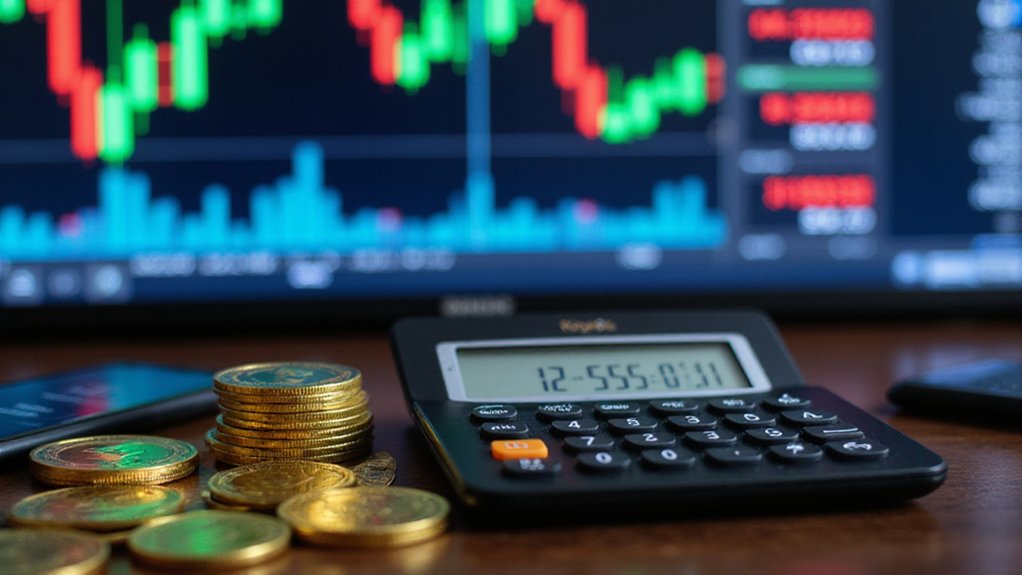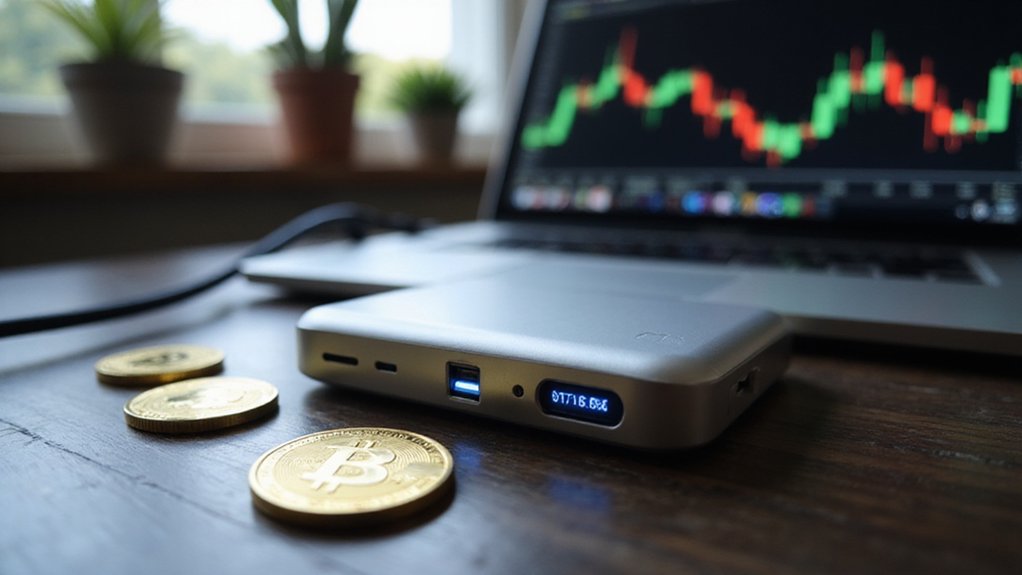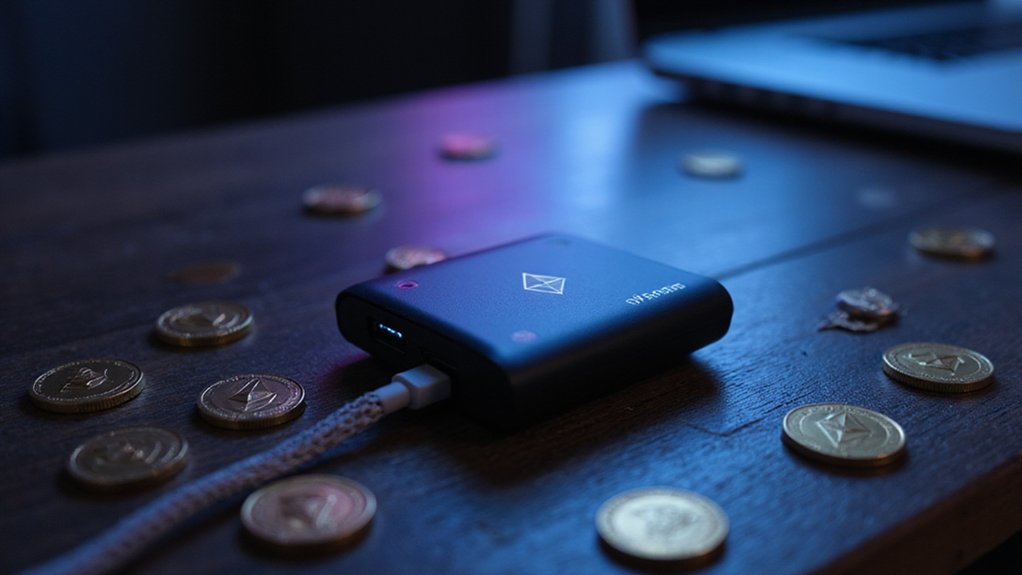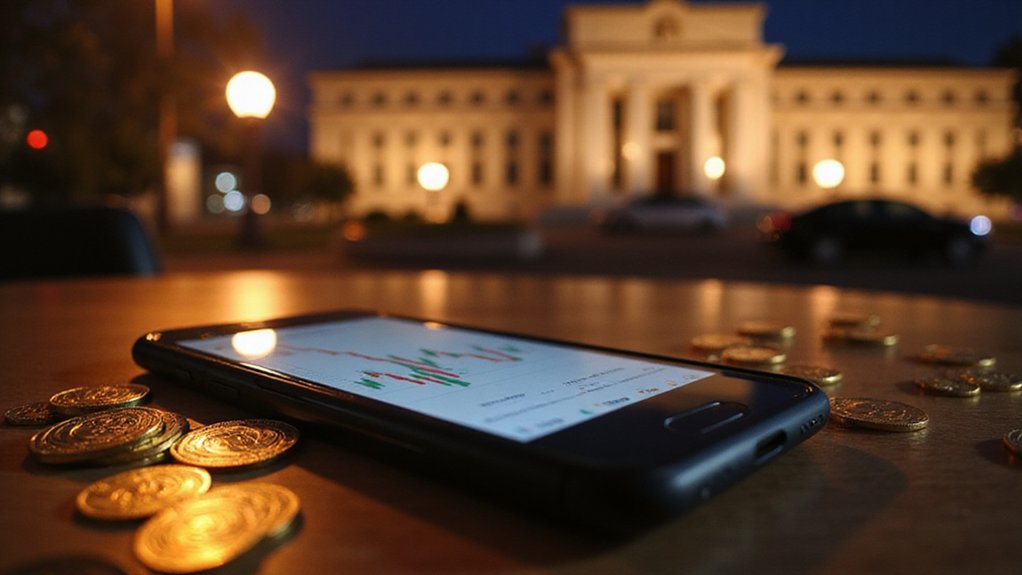Converting Gwei to USD requires a straightforward yet surprisingly humbling calculation: multiply the Gwei amount by Ethereum’s current price, then divide by one billion (since 1 ETH equals 10^9 Gwei). This mathematical reality transforms seemingly impressive figures like 500 Gwei into approximately $0.0005 when ETH trades at $1,000—a conversion that often delivers sobering perspective on transaction costs. Real-time price feeds remain essential given ETH’s notorious volatility, while specialized calculators streamline what becomes tedious manual computation for those traversing Ethereum’s uniquely granular unit structure.
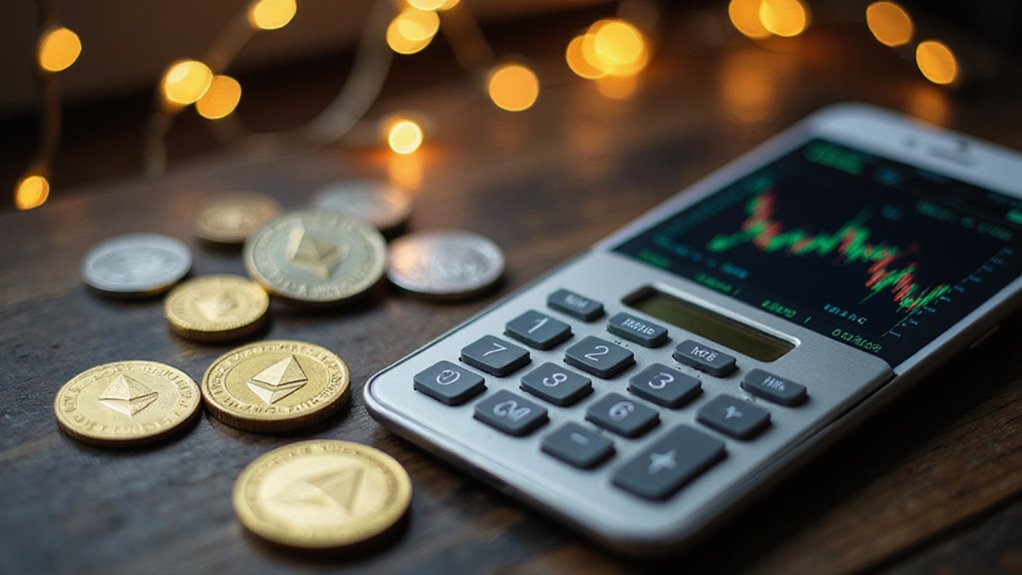
While most investors grapple with converting dollars to euros or calculating stock splits, Ethereum enthusiasts find themselves steering through the peculiar domain of converting Gwei—a unit so minuscule it makes pennies seem substantial—into comprehensible USD figures.
Understanding this conversion requires traversing Ethereum’s deliberately Byzantine unit structure. One Ether equals one billion Gwei (10^9), positioning Gwei as a subunit designed primarily for measuring gas prices on the network. The mathematical relationship creates a scenario where substantial-sounding Gwei amounts translate into laughably small dollar values—a phenomenon that consistently bewilders newcomers expecting their 420.069 Gwei to represent something more meaningful than approximately four-hundredths of a cent.
Ethereum’s unit hierarchy transforms impressive-sounding Gwei amounts into microscopic dollar values, consistently confounding newcomers expecting meaningful monetary worth.
The conversion process itself follows straightforward arithmetic, though the numbers involved can induce vertigo. Traders must first secure the current ETH price in USD (no trivial task given Ethereum’s volatility), then multiply their Gwei amount by this price, before dividing by one billion to account for Gwei’s fractional relationship to Ether. When ETH trades at $1,000, for instance, those 420.069 Gwei become $0.000420069—a sum that wouldn’t cover the processing fee for most traditional payment systems.
ETH price volatility transforms this conversion from simple mathematics into a moving target. Real-time price feeds become essential, as stale data renders calculations meaningless within hours (sometimes minutes). This dependency explains why serious users rely on specialized calculators from platforms like Alchemy and Eth-Converter, which integrate live exchange APIs and employ libraries like EthereumJS-Units for precision handling. These tools incorporate BigNumber library for enhanced computational accuracy when processing large numerical calculations. Conversion tools remain indispensable for traders seeking quick reference calculations without manual mathematical operations.
The practical applications justify this complexity, particularly for estimating transaction costs. Gas fees, denominated in Gwei, determine the real-world expense of Ethereum operations—from simple transfers to complex smart contract deployments. Converting these fees to USD enables rational economic decision-making, allowing users to evaluate whether their intended transaction justifies its cost or whether patience might yield better gas prices. Accurate cost estimation becomes crucial for users planning transactions during periods of high network congestion when gas prices fluctuate dramatically.
Wei, Ethereum’s smallest unit at 10^18 per Ether, makes Gwei appear generous by comparison. This hierarchical structure reflects blockchain’s capacity for infinite subdivision while creating conversion challenges that traditional finance never contemplated—turning routine calculations into exercises requiring scientific notation and unwavering attention to decimal placement.
Frequently Asked Questions
What Is Gwei and Why Is It Used in Ethereum Transactions?
Gwei represents one-billionth of an Ether, serving as Ethereum’s practical denomination for gas fees—because apparently expressing transaction costs as 0.000000020 ETH lacks a certain je ne sais quoi.
This unit (short for “Giga-wei”) transforms microscopic fractions into comprehensible integers, allowing users to specify gas prices without drowning in decimal places.
Rather ingeniously, it standardizes fee calculations across the network, making transaction cost estimation marginally less bewildering for mere mortals traversing Ethereum’s fee market.
How Often Do Gwei Prices Fluctuate Throughout the Day?
Gwei prices fluctuate continuously throughout the day, with significant swings occurring within hours or even minutes.
Network congestion during peak usage periods—such as major NFT drops or DeFi activity—can drive prices from single digits to 30+ Gwei rapidly.
Despite EIP-1559’s stabilization efforts, real-time demand still creates substantial volatility, with prices typically lowest during off-peak UTC hours before climbing as global transaction volume increases throughout the trading day.
Are There Fees Involved When Converting Gwei to USD?
Converting Gwei to USD involves no direct fees—it’s merely a mathematical calculation requiring current ETH pricing data.
However, the underlying transactions necessitating such conversions inevitably incur Ethereum gas fees (paid in Gwei, naturally).
Should one actually convert ETH to fiat USD through exchanges, withdrawal fees and spreads materialize.
The irony? While calculating Gwei’s dollar value costs nothing, the transactions generating those calculations certainly do.
What Causes Gwei Gas Prices to Increase or Decrease?
Gwei prices fluctuate primarily due to network congestion—when transaction volume spikes (often from NFT drops or DeFi frenzies), users compete for limited block space, driving fees skyward.
Transaction complexity matters too; simple transfers cost less than elaborate smart contract gymnastics.
The EIP-1559 upgrade introduced algorithmic base fees that adjust with demand, while external factors like ETH’s price movements influence user behavior and perceived gas affordability.
Can I Set up Automatic Alerts for Specific Gwei Price Levels?
Users can indeed establish automatic alerts for specific Gwei thresholds through various platforms—MetaMask, Etherscan, and GasNow offer such functionality.
These services notify traders via push notifications or email when gas prices hit predetermined levels, enabling strategic transaction timing. Given Ethereum’s notorious fee volatility (as previously discussed), such alerts prove invaluable for cost optimization, though one wonders why automated thresholds remain necessary in a supposedly efficient market.
